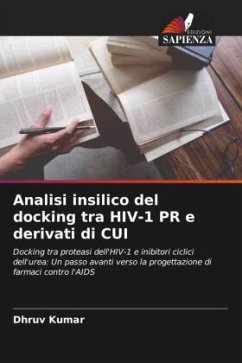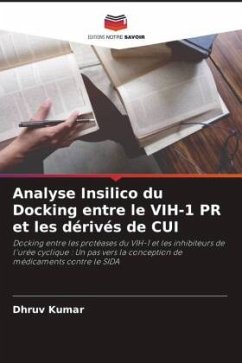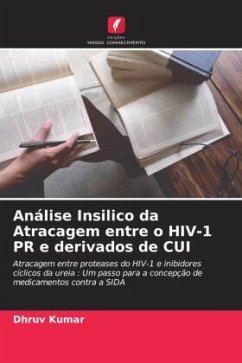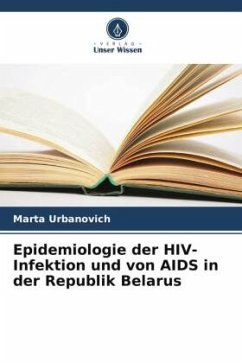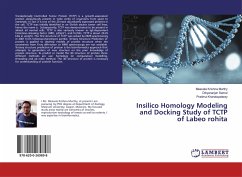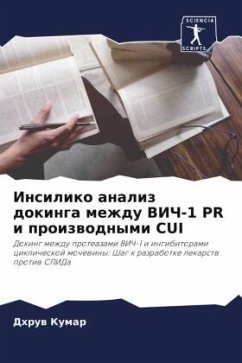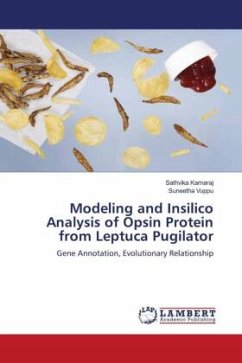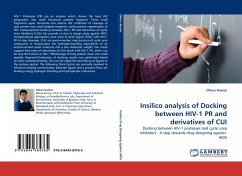
Insilico analysis of Docking between HIV-1 PR and derivatives of CUI
Docking between HIV-1 proteases and cyclic urea inhibitors : A step towards drug designing against AIDS
Versandkostenfrei!
Versandfertig in 6-10 Tagen
32,99 €
inkl. MwSt.

PAYBACK Punkte
16 °P sammeln!
HIV-1 Proteases (PR) are an enzyme which cleaves the long HIV polyprotein into small functional peptide fragment. These small fragments again terminate into mature HIV. Inhibition of cleavage of poly protein into small peptide fragment could prevent regeneration of HIV. Computational docking between HIV-1 PR and derivatives of Cyclic Urea Inhibitors (CUIs) has provide us clue to design drug against AIDS. Computational approaches were used to dock ligand (CUIs) with HIV-1 PR to stop cleavage. CUIs are seven-member ring structure of cyclic urea compound. It incorporates the hydrogen-bonding equi...
HIV-1 Proteases (PR) are an enzyme which cleaves the long HIV polyprotein into small functional peptide fragment. These small fragments again terminate into mature HIV. Inhibition of cleavage of poly protein into small peptide fragment could prevent regeneration of HIV. Computational docking between HIV-1 PR and derivatives of Cyclic Urea Inhibitors (CUIs) has provide us clue to design drug against AIDS. Computational approaches were used to dock ligand (CUIs) with HIV-1 PR to stop cleavage. CUIs are seven-member ring structure of cyclic urea compound. It incorporates the hydrogen-bonding equivalents of an enzyme-bound water molecule into a low molecular weight. Our result suggest that some of derivatives of CUIs binds with HIV-1 PR, which can be stop the fuction of HIV-1 PR(cleavage of long protein chain into small peptide fragment).Evaluation of docking results was performed based on steric complementarity. This can be called the best fitting of ligand to the enzyme pocket. Thefollowing three factors are primarily involved to influence binding conformation between ligand and a protein.These are binding energy,hydrogen bonding,and hydrophobic interaction.



